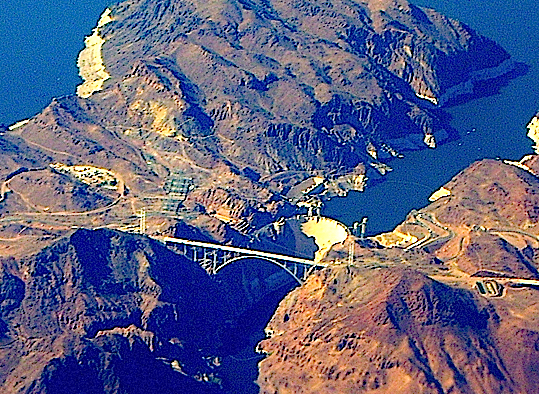
Rivalry,
rivers & reclamation
Dams
and competitive exclusion among federal agencies
Reisner - chapter 6.
“capacity to develop resources”
reclamation
rival
levee
estuary
biotic community
habitat
net primary productivity
“hyperventilating economy”
law of diminishing returns
ecological integrity
marshland reclamation
arid lands reclamation
date amount arable land per capita
1890, 77 acres of cultivated land / person
1915, 04 acres of cultivated land / person
1962, 02 acres of cultivated land / person
The great plains were settled by windmills, barbed wire and steel plows.
“increasing intensive resource development”
population growth + rising affluence + technological changes (electricity) = Impact
extensive vs. intensive space availability capacity
Dams
and competition among federal agencies: Bureau of Reclamation, Army Corps of
Engineers, the Bureau of Land Management (BLM), Department of Interior, Department
of Agriculture.
“planning water resource development to meet future needs” (170)
Army Corps of Engineers [1810] military facilitate interstate commerce
Bureau of Reclamation [1902] acreage limitations for water projects was
built into the original act to benefit small farmers
“big corporate farmers who wanted to monopolize whole rivers”
looming water crisis [1980s] drought, flood, aquifer overdraft (172)
Army Corps of Engineers & the Bureau of Reclamation cases of conflict:
size of the floods, Eel River, California, Bijou Creek, Colorado.
It was important to devise a means to get around acreage limitations of the 1902 Act & service requiring water projects to restrict the provision of water to farms of no more than 640 acres in size as was the area granted to settlers under the Homestead Act of 1865.
San Joaquin Valley's four largest land owners* by damming the Kings, Kern, Kaweah,
& Tule Rivers in Kern County, California.

*"Salyer, Boswell, Kern County Land, and Miller & Lux were among the
very largest and richest farmers in the entire world." (175)
Kern County Land held 413,000 acres & is now owned
by Tenneco (174)
“Although the Tulare and Buena Vista lakes were privately owned, for the
most part, the rivers which fed them were in the public domain.” (175)

“spoilsmen in spirit… working hand in glove
with land monopolies.”
Harold
Ickes remarks concerning the power of the Corps in Congress, a cozy triangle
of political interests with big farmers.
Warning of monopoly interests:
"The covert liaison between the Corps of Engineers & the world's largest
irrigation farmers was to live on … as an example of government subsidizing
the wrong people, for the wrong reasons…."
Corps replaced the Bureau due in part to not being bound, nor desiring to abide
by acreage limits placed by Congress in 1902.
But competition
between them meant overproduction of capacity; that is more water became available
at lower prices for consumers! (201-213)
Reisner - chapter 6, pp.169-213.
Estuarine science and the origins of ecological thought.
Ecology of predator and prey relations along a river that feeds and estuary.
Land is nourished by water in that the energy from the tides and river flow through the habitat feeds the biotic community.
Nathaniel Shaler was among a series of practitioners who created a science of the land: